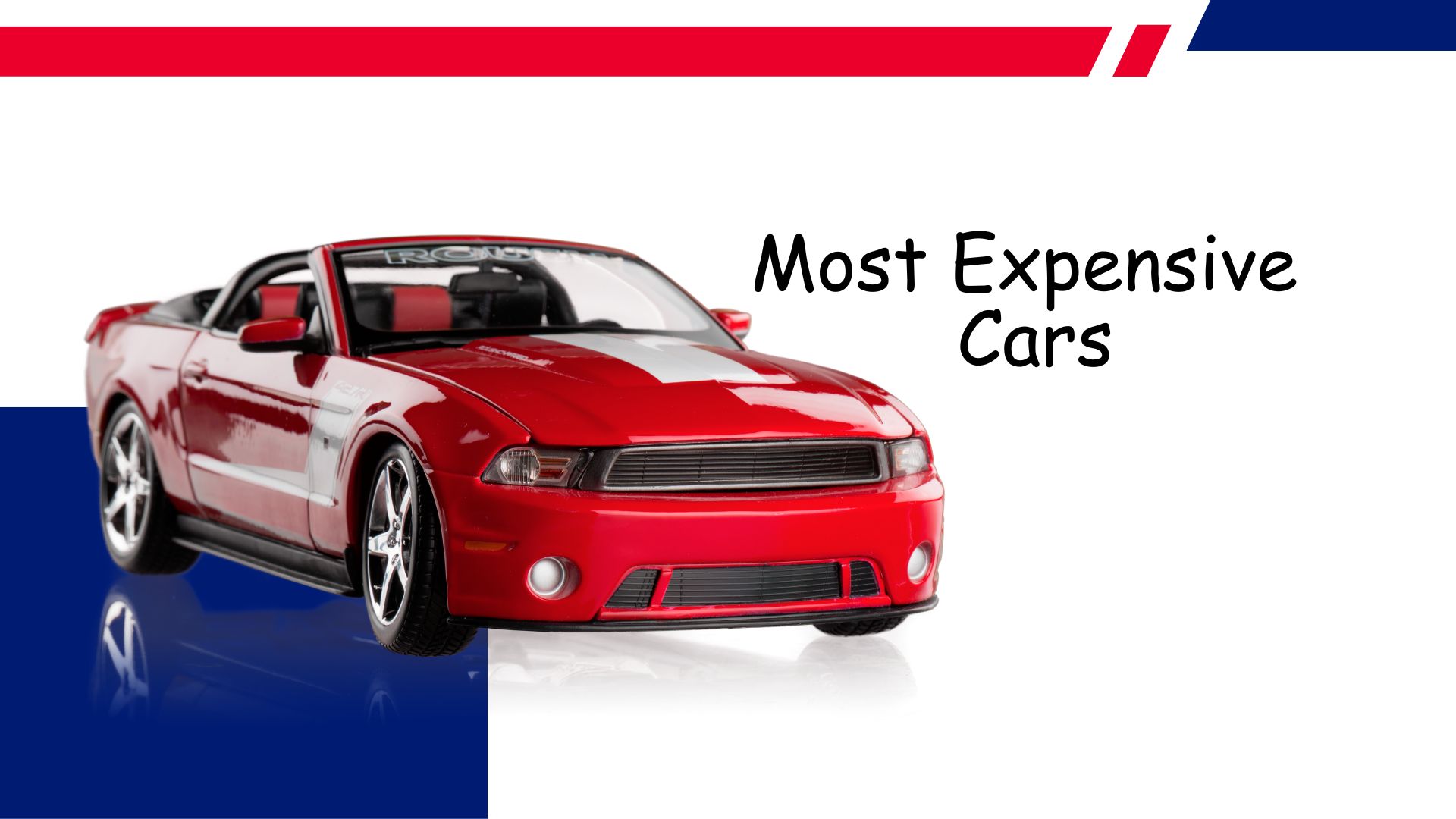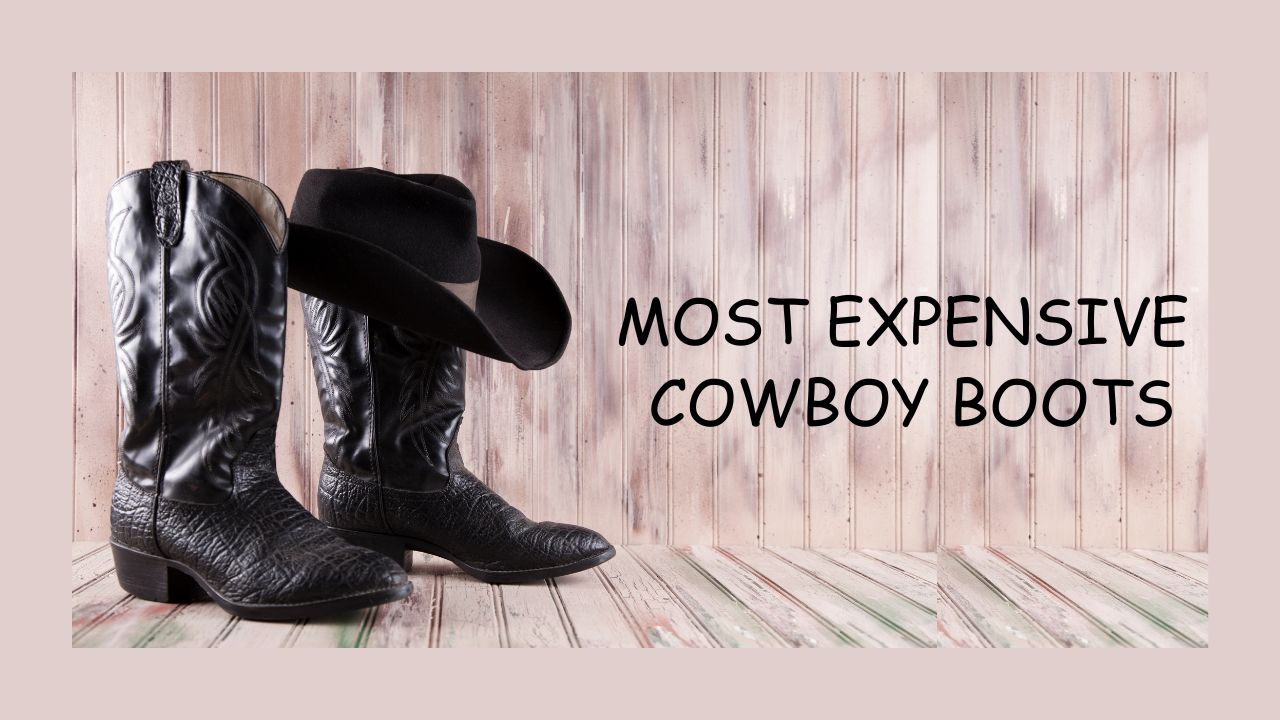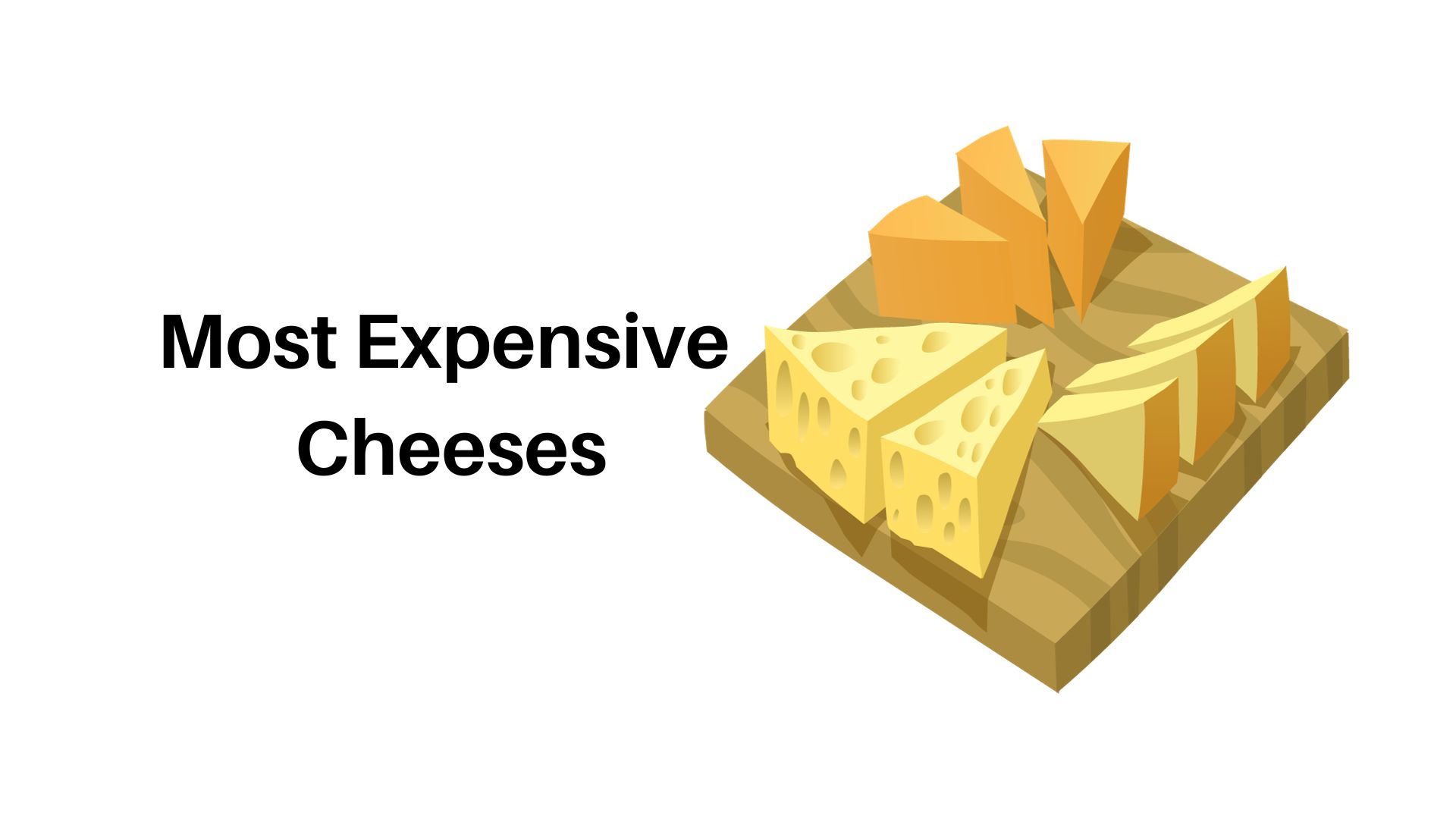Top 10 Most Expensive Alcoholic Drinks In The World
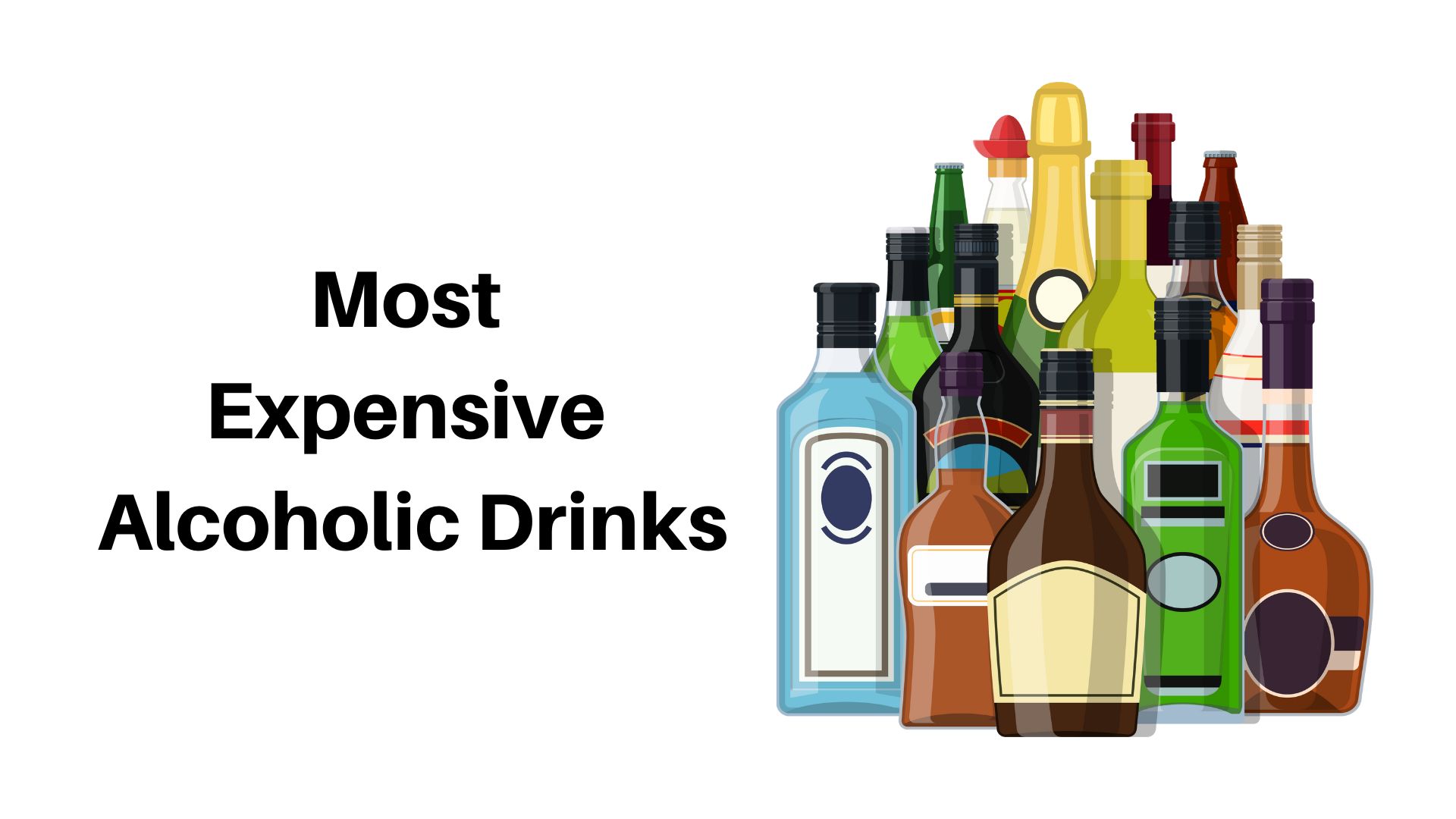
Page Contents
Alcoholic drinks refer to any drinks containing ethyl alcohol, a form of alcohol created through fermentation or distilling. You'll find them in margaritas, beers, champagne, and whiskey among other drinks. Wines are produced from fermented juice or grapes while beer comes from wheat fermentation or other sources. Cocktails are blended martinis that combine various alcoholic beverages and foods with added ingredients for an enjoyable cocktail experience.
Alcohol can have some medical advantages when consumed in moderation, however excessive drinking may lead to life-threatening conditions like liver failure, cardiovascular disease, and substance abuse. Therefore individuals need to drink sensibly and moderately; additionally, those under 18 are prohibited from ingesting hard liquor.
History of Alcoholic Drinks
Alcoholic beverages have been an integral part of human culture for millennia. Ancient societies such as the Mayans, Egyptians, and Chinese developed methods for processing wheat and grapes into wine and beer that can be used to trace back the origins of alcoholic beverages today. The wine was often given during religious rituals and community celebrations in classical Antiquity as it served as an emblem of wealth and civilization.
Rome loved wine too, perfecting intricate methods for production and maturation. Monks played a prominent role in producing and selling hard liquor during the Medieval Ages, particularly beer. They founded distilleries across Europe and were the first to cultivate hops – an essential ingredient in beer making – through fermentation processes.
In the 16th and 17th centuries, Spain introduced distilling methods to the New Lands, leading to the birth of hard liquor such as rum, tequila, and bourbon. Mariners and criminals who often drank them for health purposes began developing a following around these intoxicants.
The production and consumption of alcoholic beverages underwent significant changes during the Industrial Age in the late 19th and early 20th centuries. Thanks to technological advancements, beer, and spirits could now be produced in large amounts; as middle-class populations increased, so did the demand for such hard liquors.
In the late nineteenth and early twentieth centuries, abstinence from alcohol consumption became increasingly prominent both within and outside of America. Alcohol consumption also became a topic of social and political debate. In 1920; the Americas passed Temperance legislation which outlawed the production; distribution and transit of alcoholic beverages. While this ban was eventually lifted in 1933, its legacy still influences how alcohol is produced and distributed today in this country.
Alcoholic beverages are now enjoyed worldwide; from informal social functions to official functions. Yet there remain ongoing discussions regarding the health effects of drinking and how best to discourage excessive consumption – making alcohol use a contentious topic.
Types of Alcoholic Drinks
- Beers
- Wine
- Whiskey
- Scorch
- Tequila
- Vodka
- Champagne
- Cocktails
- Cider
- Sake
Popular Alcoholic Drink Brands
- Budweiser
- Heineken
- Stella Artois
- Bacardi
- Smirnoff
- Absolut
- Pina colada margarita
- Magners
- Woodpecker
- Dom perignon
- Barefoot
- Sutter home
Uses of Alcoholic Drinks
- Alcoholic beverages are often drunk in social settings, like parties or get-togethers, to promote relaxation and the joy of others.
- They're also commonly consumed to commemorate important events like marriages, anniversaries, and vacations.
- Alcoholic beverages can often be employed to help people relax and decompress after a long, stressful day.
- Alcoholic beverages can be used in culinary to give food flavor and richness. For example, beer is commonly used as the substrate for chips and fish dishes, while wine is commonly included as an ingredient in stews or condiments.
- Alcohol has long been used medicinally. Small doses of alcoholic beverages may produce a relaxing effect and help reduce anxiety or stress. Many herbal cocktails also possess therapeutic effects.
- Alcoholic beverages have long been part of religious and spiritual rituals. For instance, beer is sometimes used in Native American ceremonies while wine is typically featured during Christian Eucharist services.
You May Also Like to Read:
- Drinking At Work Statistics
- Alcoholism Statistics
- Most Expensive Tequilas
- Most Expensive Champagne Bottles
Why Alcoholic drinks are Expensive?
- Depending on the beverage and production techniques employed, costs for creating beverages can differ considerably. For instance, cultivating, gathering, and processing berries might contribute significantly to producing wine at a higher cost.
- Many spirits, such as bourbon and wine, must be aged before being ready for sale. As a result, prices tend to go up the longer the beverage has been brewed.
- Alcoholic beverages often face steep taxes, driving up their cost. Restrictions that restrict production or sale may also have been implemented which could further raise prices for those beverages.
- Alcoholic beverage producers typically invest heavily in branding and marketing to differentiate their goods from competitors. For prestige or designer brands, this may result in increased pricing for the beverage.
- Alcoholic beverage prices are determined by demand and availability, just like any other commodity. A certain kind of beverage will likely become more expensive when there's a high demand for it.
The Popularity of Alcoholic Drinks
Today, many Americans still favor alcoholic beverages as their preferred beverage. Alcoholic drinks are easily accessible across most of the country and are often consumed socially, during mealtime or to unwind after work; however, purchasing habits and preferences may differ depending on location and society.
Recent awareness has grown of the harmful effects of frequent alcohol consumption on one's health and community, as well as the economic costs associated with issues like dependency, disasters, and violence.
Due to this, many government agencies and health groups have implemented regulations and strategies designed to reduce harmful drinking habits and promote sustainable consumption. These could include levies on alcohol sales, restrictions on advertising and promotion of the beverage, as well as public awareness campaigns regarding the dangers of binge drinking.
Artisanal and handmade alcoholic beverages such as microbreweries, craft distilleries, and smaller wines have seen an uptick in recent years due to their perceived higher quality or distinctive features. As a result; those with money to invest find these goods increasingly desirable. Despite these challenges; alcoholic beverage production and consumption remain major components in many communities and industries around the world; however; measures are being taken to combat excessive use and promote responsible alcohol dependence.
World’s Top 10 Most Expensive Alcoholic Drinks
- Billionaire Vodka – Worth $3.7 Million
- Tequila Ley 925 – Worth $3.5 Million
- Henri IV Dudognon Heritage Cognac Grande – Worth $2 Million
- Mendis Coconut Brandy – Worth $1 Million
- Macallan 64 Years Old in Lalique – Worth $625,000
- 1945 Romanee-Conti Wine – Worth $558,000
- Armand de Brignac Midas – Worth $265,000
- The Sapphire Revelation by Bombay – Worth $200,000
- Diamond Jubilee by Johnnie Walker – Worth $165,000
- The Ruby Rose Cocktail – Worth $40,000
#1. Billionaire Vodka – (Worth $3.7 Million)
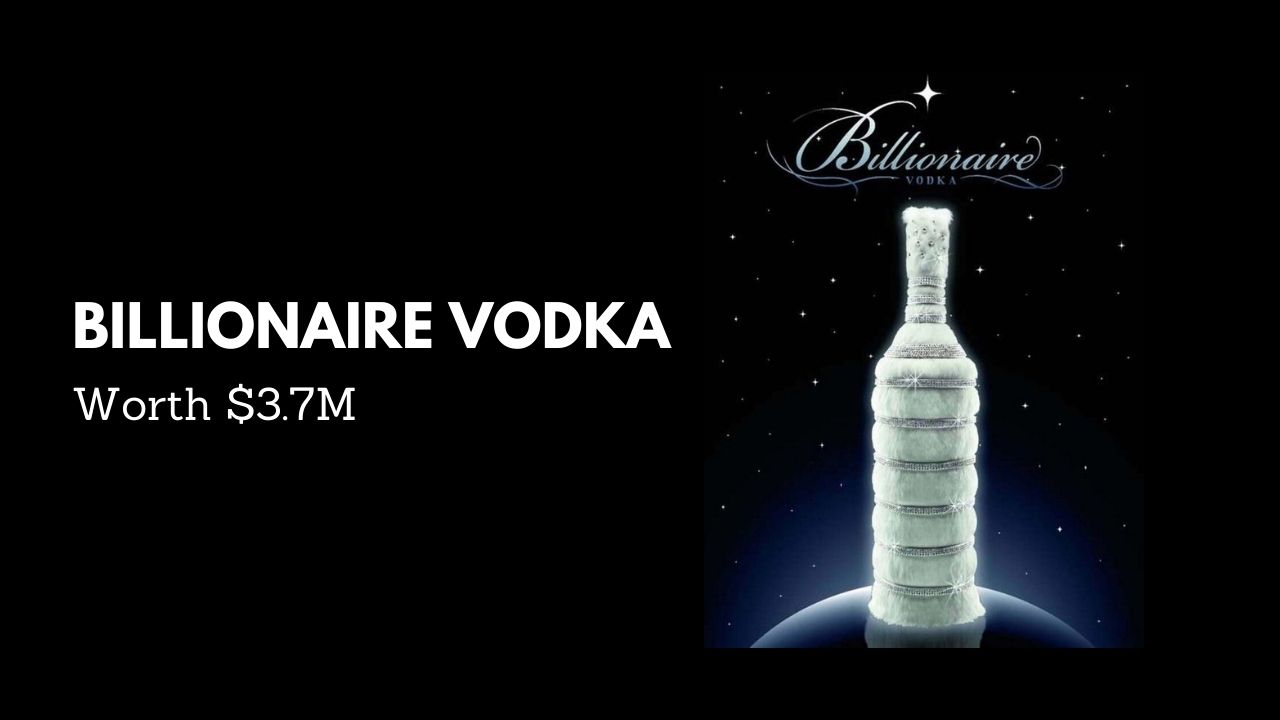
Billionaire Vodka, with a bottle price tag of $3.7 Million, is the priciest alcoholic beverage on Earth. A company with “billionaire” in its logo should naturally rank among some of the top 10 lists – and indeed they do! Their tagline reads “It truly is enjoyable to be king.”
Each five-liter container is handcrafted using an innovative Russian technique; Leon Verre designed each five-liter vessel adorned with 3,000 gems and Swarovski crystals for added uniqueness.
#2. Tequila Ley 925 – (Worth $3.5 Million)
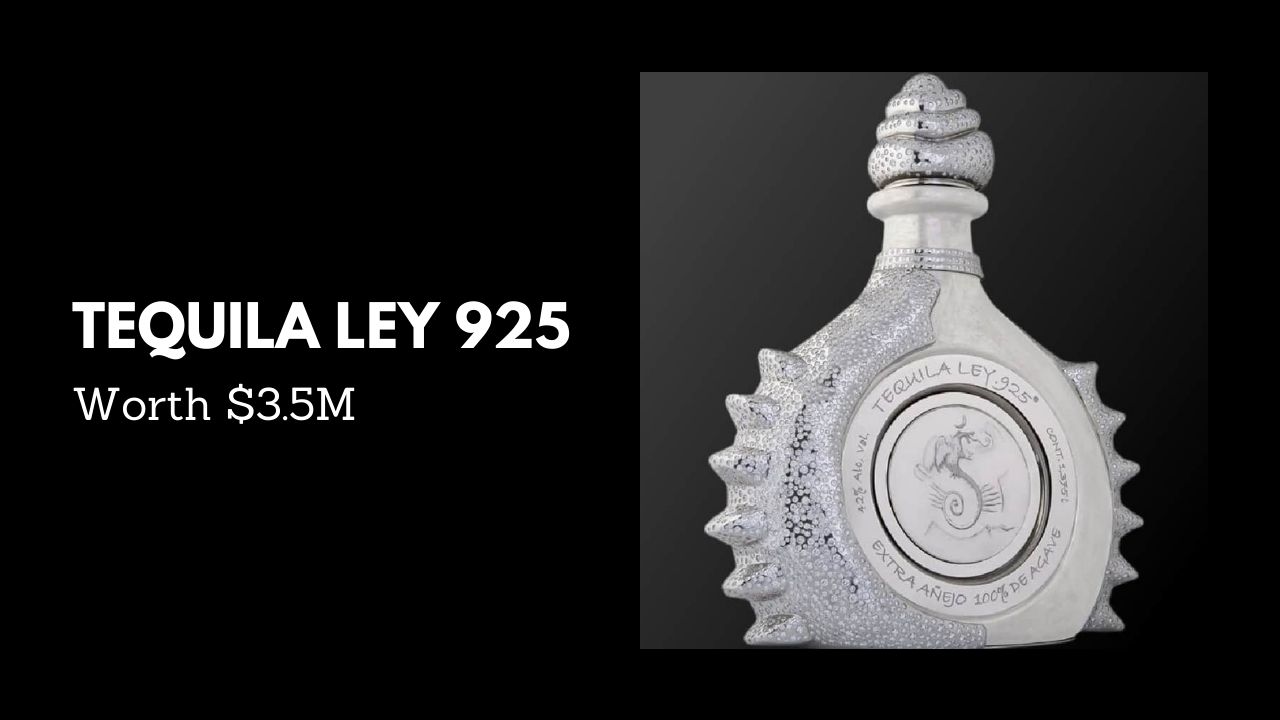
Tequila Ley is currently listed as the second-costliest container of alcoholic beverages on earth, featuring 6,400 gems encrusted into both white gold and platinum vessels designed by Mexican artist Alejandro Gomez Oropeza. Filled with Anejo Tequila that's four years old, this bottle costs $8,000.
According to Mexican artist Alejandro Gomez Oropeza, these gems enhance its aroma; therefore its high price point – though who knows, perhaps someday this bottle will sell for less money? We'll have to wait and see! For now, though we must pay!
#3. Henri IV Dudognon Heritage Cognac Grande – (Worth $2 Million)
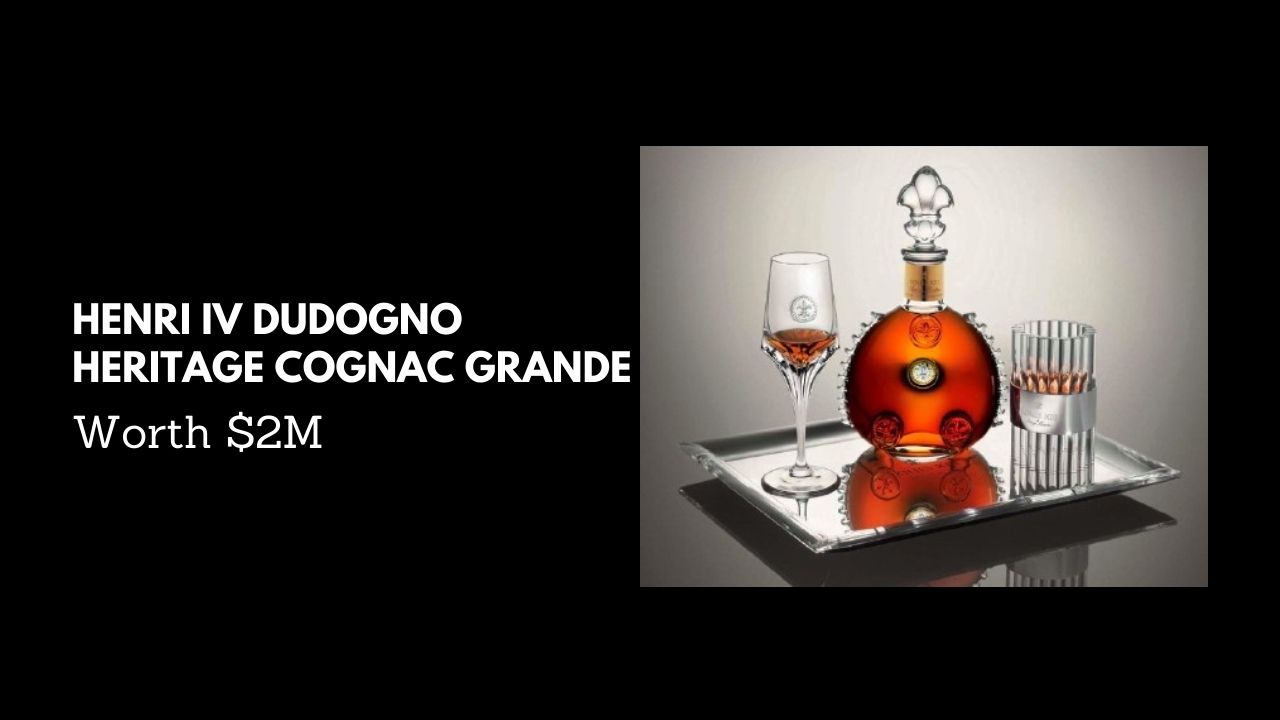
Henri IV Dudognon Heritage Cognac Huge Champagne is the epitome of luxury, so you should expect it to cost $2 million. This beverage boasts two noteworthy characteristics: it has been aged for more than 100 years in wooden barrels and contains 41% alcohol.
The most luxurious containers are constructed out of pure platinum, 24-karat gold, and 6,500 gems; each includes 100 cl of this legendary Dudognon Heritage Cognac Grande Champagne that has been produced since 1776.
#4. Mendis Coconut Brandy – (Worth $1 Million)
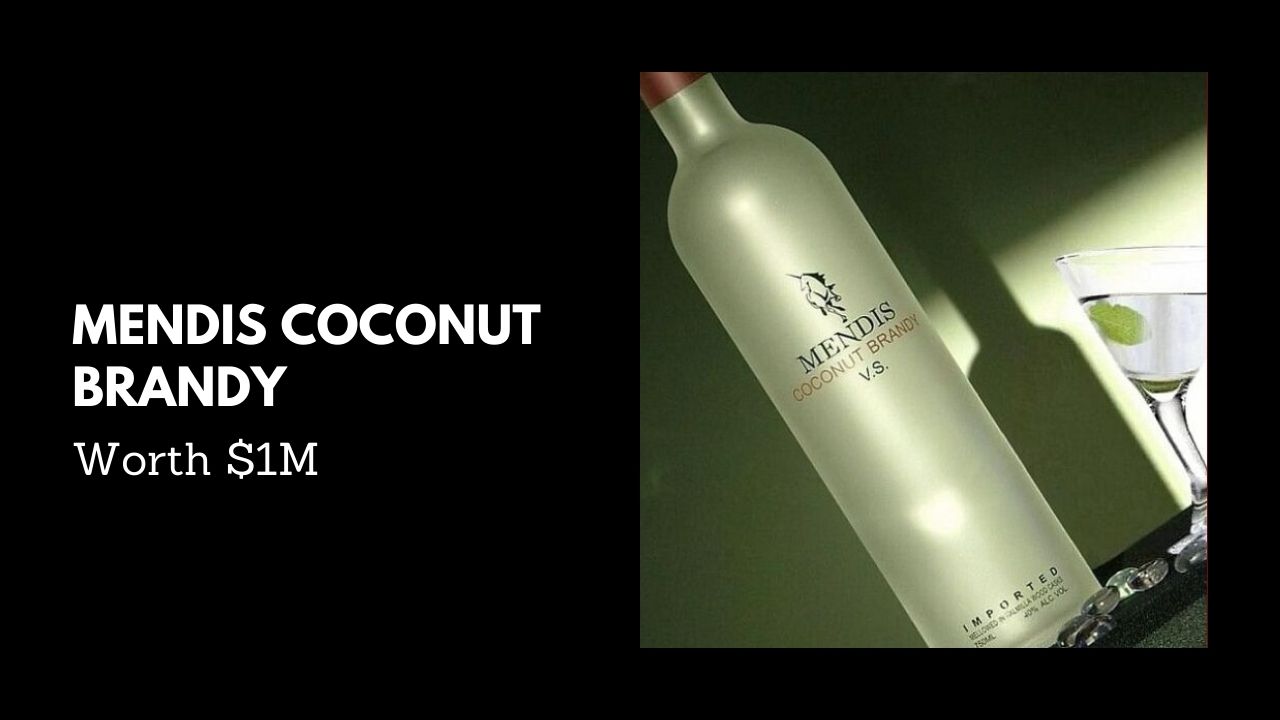
The Mendis Company is one of Sri Lanka's oldest and most reputable alcohol producers. Their signature product, a triple-distilled cognac made with coconut blossoms that give it its unique flavor and aroma, has become their mainstay.
This cognac was aged for more than three years before bottling, and another year was required before delivery to clients around the world.
Only ten containers were ever produced – one of them auctioned off for 1 million dollars, making it incredibly rare and therefore commanding an inflated premium price tag.
#5. Macallan 64 Years Old in Lalique – (Worth $625,000)
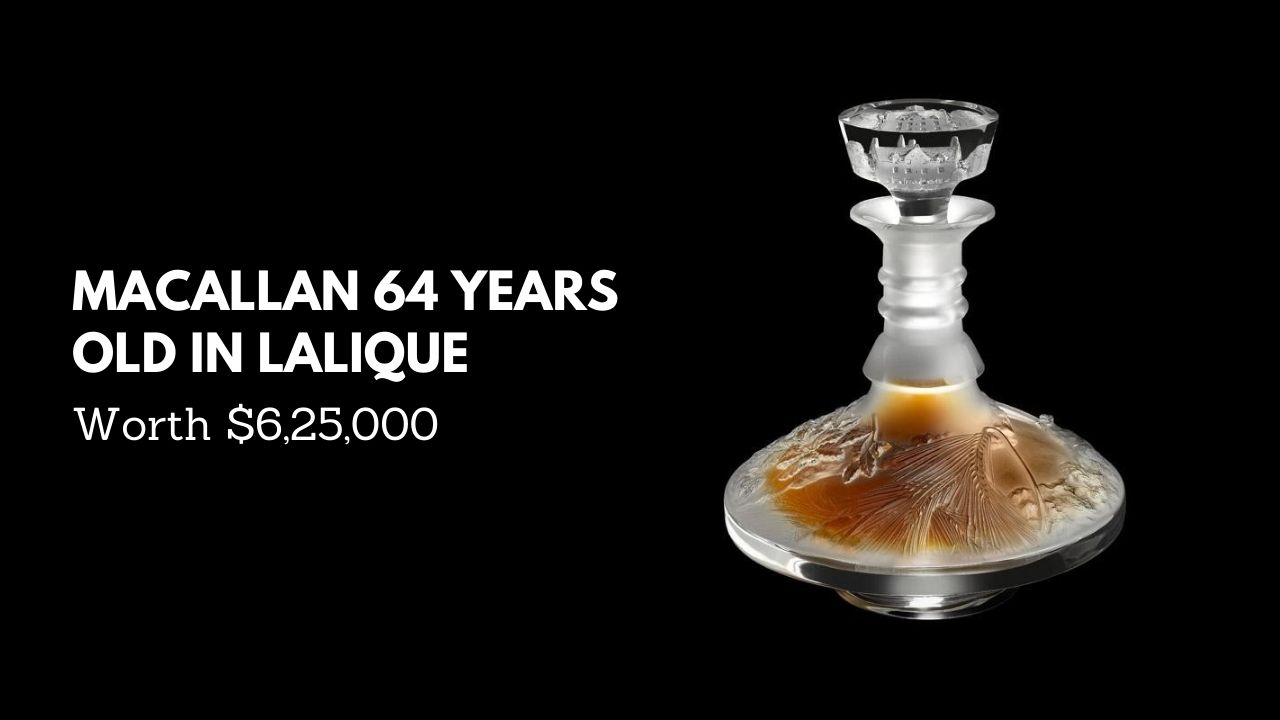
As expected; Macallan 64-year-old in Lalique is the next whisky on our list. Macallan is renowned for producing premium single-malt whiskey.
Macallan is renowned for its expansive whiskey selection. To celebrate Rene Lalique's 150th birthday in 1859; Macallan produced five special batches aged 64 years each.
#6. 1945 Romanee-Conti Wine – (Worth $558,000)
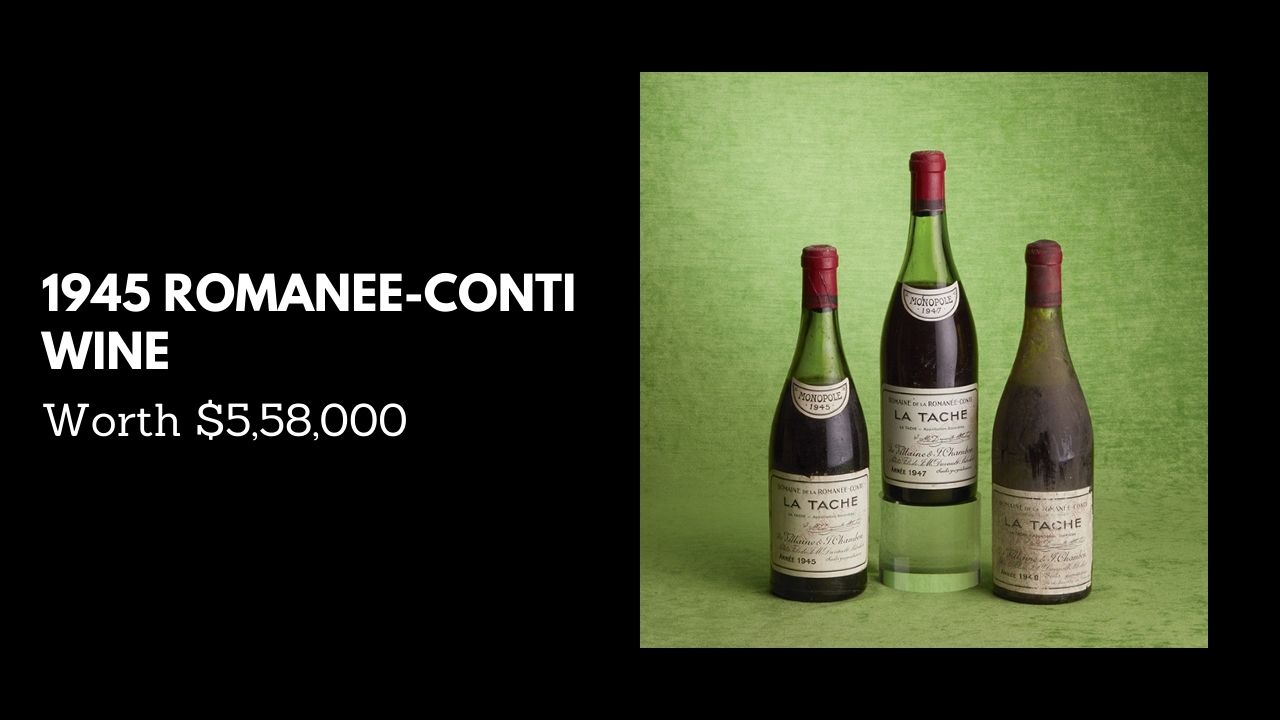
The 1945 Romanee-Conti Wine, often featured at Sotheby's in New York, is currently ranked as one of the world's most expensive alcoholic products. Domaine de la Romanee produced 600 bottles in 1945 – at an eye-watering $558, 000 per bottle!
This renowned winery produces approximately 3,500 cases annually and all sparkling wines from this region are not only rare but abundant as well.
#7. Armand de Brignac Midas – (Worth $265,000)
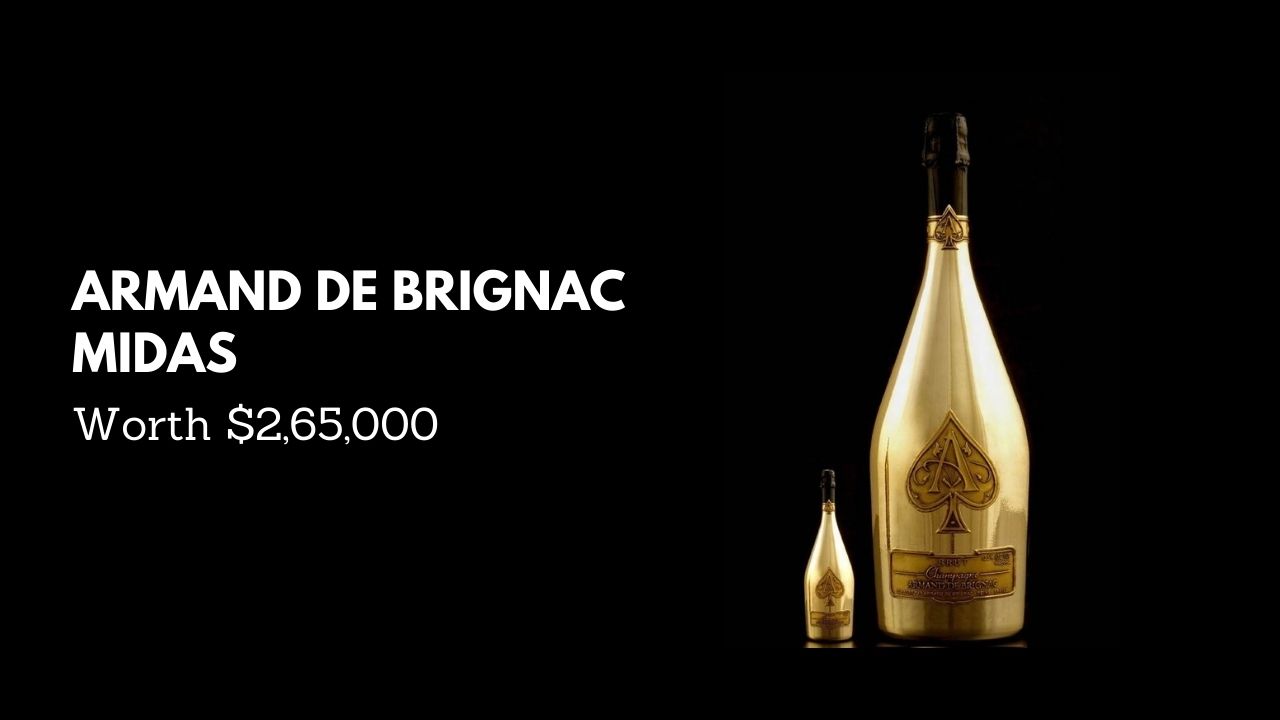
Armand de Brignac Midas is one of the world's most expensive bottles of alcohol, selling for an eye-watering $265,000.
Crafted by 8 craftsmen over 45kg containers inspired by King Midas tale, six containers are produced in limited quantity at Chigny-Les-Roses, France using traditional methods to achieve the authentic flavor and scent on each container.
Made with 40% Chardonnay, 20% Pinot Meunier, and 40% Pinot Noir, it has a sweet aroma, smoother texture, and creamy consistency when finished.
#8. The Sapphire Revelation by Bombay – (Worth $200,000)
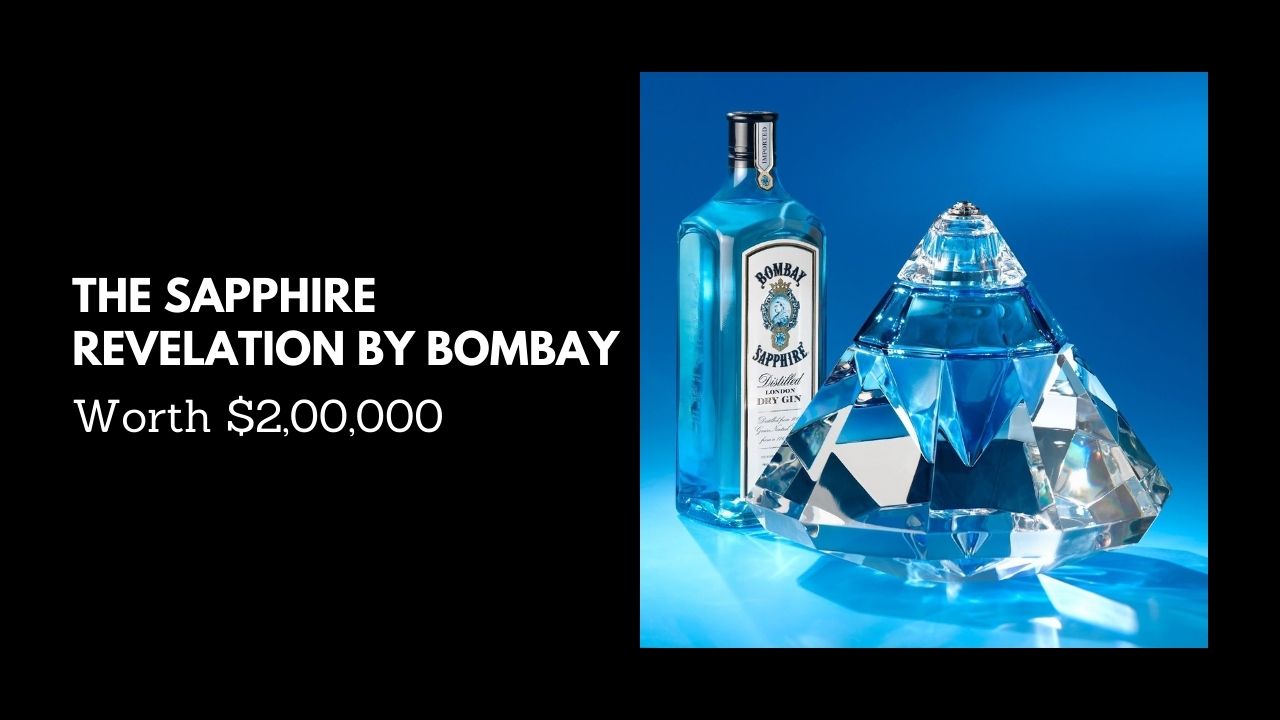
One of Bombay's limited-range gins is The Sapphire Revelation. This esteemed gin manufacturer with headquarters in London produces one of the world's most expensive hard liquors at $200,000: Sapphire Revelation.
Six containers are meticulously handcrafted from Baccarat glassware, rhinestones, and gems to look like treasures – not to mention some of their greatest gins ever created! These Moonstone containers have become internationally renowned artistic masterpieces.
#9. Diamond Jubilee by Johnnie Walker – (Worth $165,000)
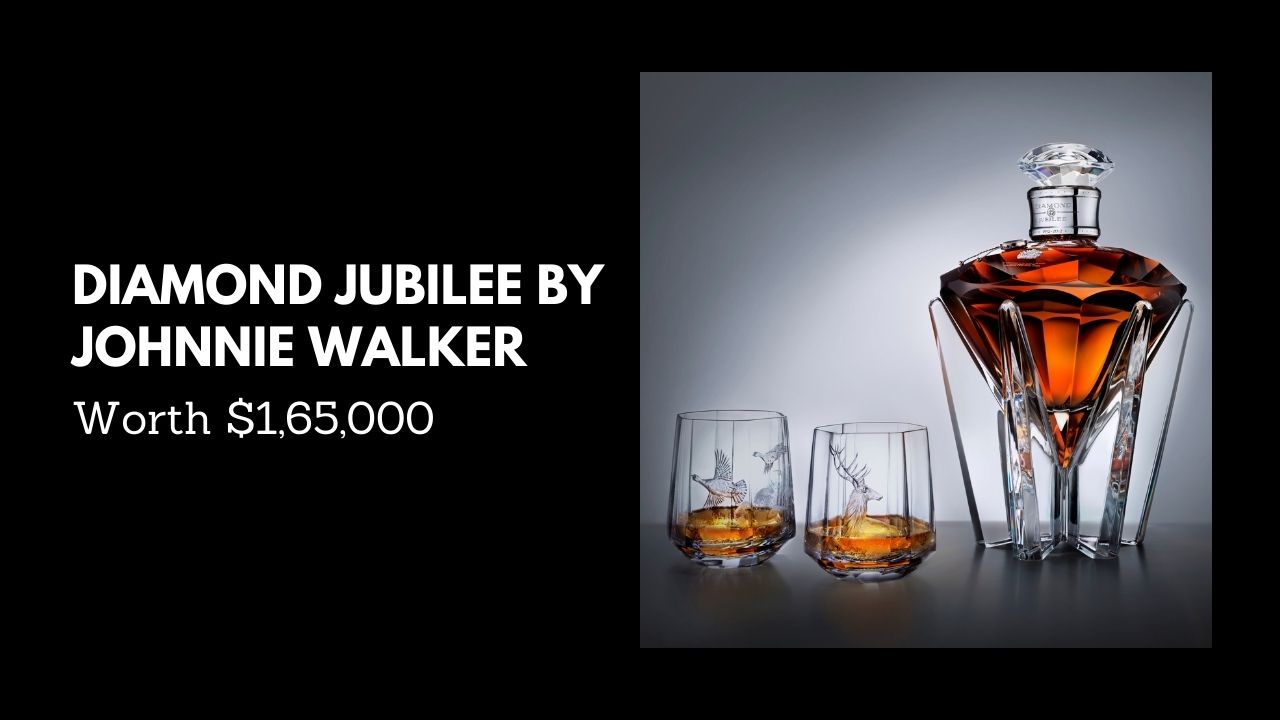
Johnnie Walker Diamond Jubilee Whiskey is one of the world's most expensive hard liquors. To mark their 60th anniversary and commemorate Princess Anne's coronation in England, Johnny Walker created their prestigious Diamond Jubilee collection – widely considered to be their finest whisky ever produced.
The container deserves praise as well, being made from Baccarat glassware and studded with half-carat gems!
#10. The Ruby Rose Cocktail – (Worth $40,000)
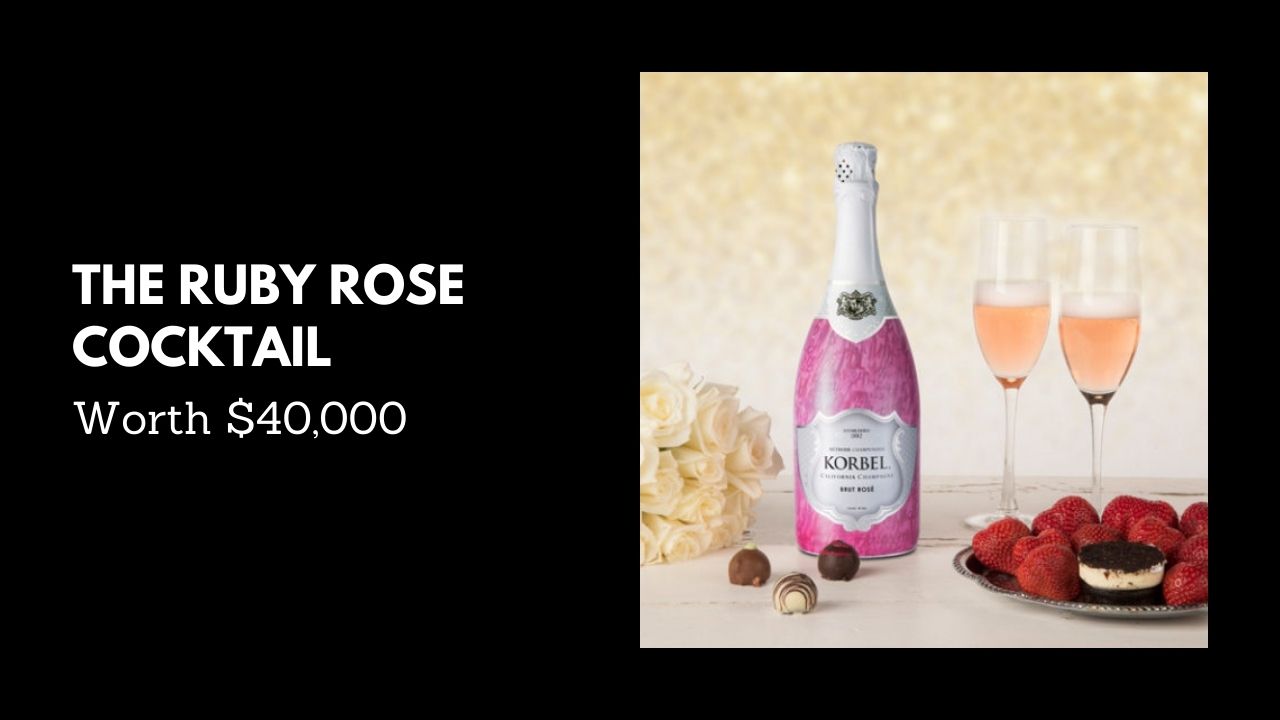
Ruby Rose: The next great drink? Even if the appearance doesn't tempt you to try it, its composition and flavors may just convince you that this beverage should be enjoyed.
Pomegranate juice, Hanger One liquor, St. Germaine, citrus fruits, and rosewater can all be easily made at home with ingredients readily available. But for something extra special and luxurious? Add four-carat rubies to the drink for an impressive $40,000 cocktail!
Bottom line
Premium alcoholic beverages may serve as a visual representation of privilege and wealth, but their high prices don't always translate to superior flavor or excellence. Taste is highly subjective, so what one individual finds expensive may not be so for another. Some expensive drinks may be hard to obtain or have limited production runs which could increase their cost; novelty may therefore be seen as an indicator of superiority.
Branding and promotional efforts play a significant role in driving up certain alcoholic beverage prices too, such as superior labeling or corporate sponsors which further contribute towards elevating their luxurious reputations.
The cost-effectiveness of a pricey alcoholic beverage ultimately depends on one's own desires and budget. On special occasions, some might feel justified in spending a considerable amount on a container while others would opt for a cheaper alternative. It is essential to remember that no matter the cost, consumption should always remain moderate and sensible.
FAQ.
Moderate drinking has several potential health advantages. One major advantage is reduced risk of cardiovascular diseases like heart attacks or strokes, plus it could decrease diabetes risks too! With regular drinking habits, you could significantly lower your potential vulnerability to these events.
Red wine, bourbon, tequila and strong kombucha are better alternatives to beer and sweet drinks like soda. According to the Centers for Disease Control and Prevention (CDC), daily alcohol consumption should not exceed two drinks per man and one per woman.
Absolutely. Alcohol has a profound impact on cognitive functioning and psychological well-being the longer one drinks. As such, some may experience feelings of being less restrained, sadness, anger, rage, anxiety or tension regardless of their pre-intoxicated state of mental well-being.
Limited evidence suggests moderate alcohol consumption may help boost HDL (the "good") cholesterol levels in the body. Red wine in particular has been said to contain polyphenols which could protect the cardiovascular system.

Aditi is an Industry Analyst at Enterprise Apps Today and specializes in statistical analysis, survey research and content writing services. She currently writes articles related to the "most expensive" category.
